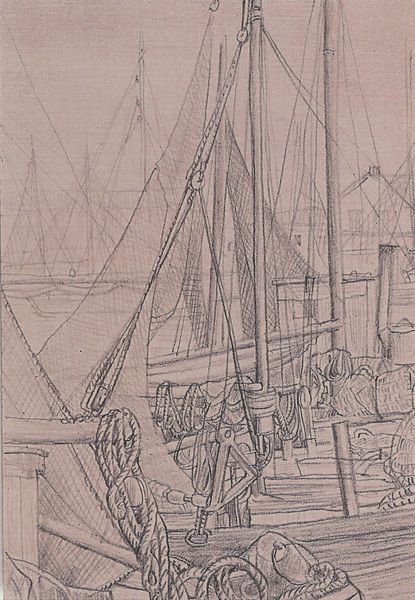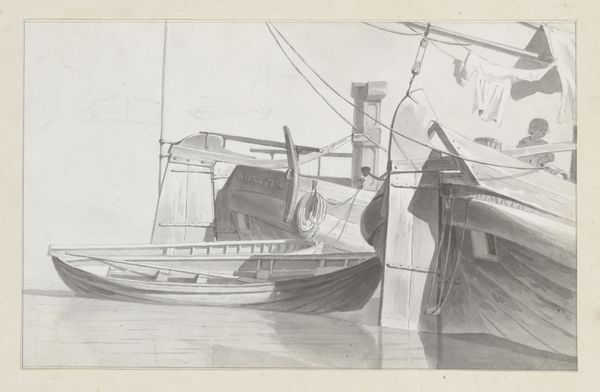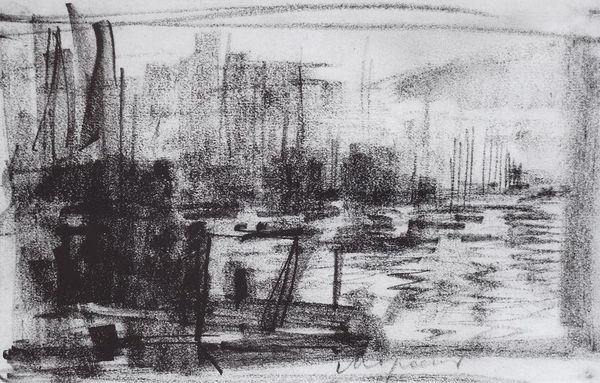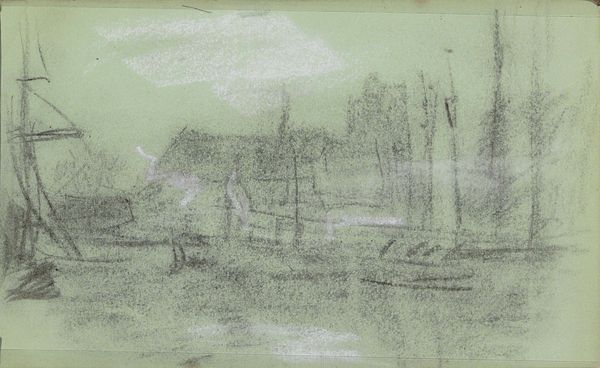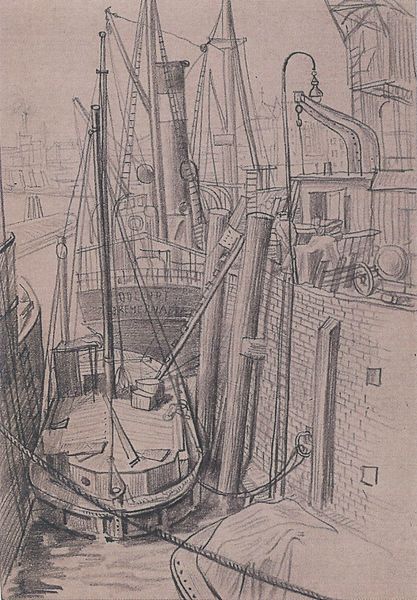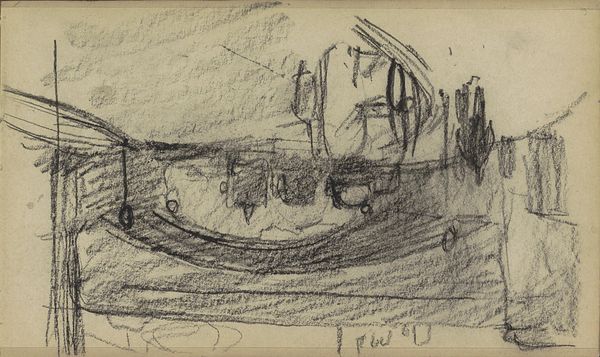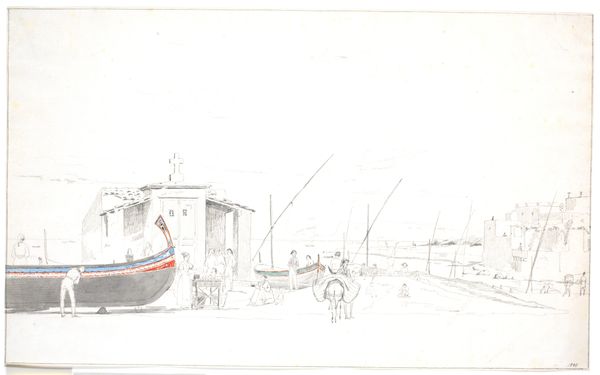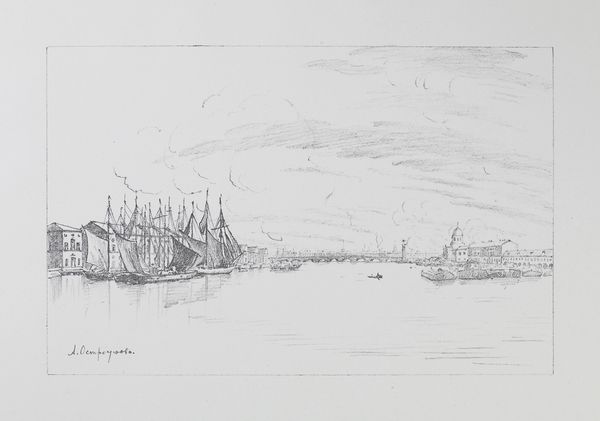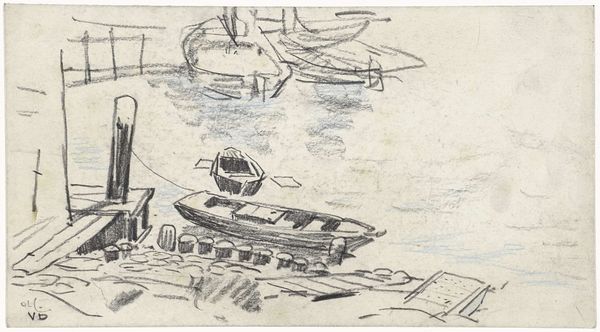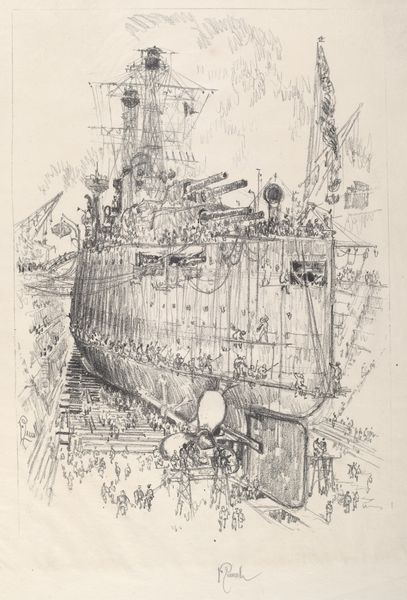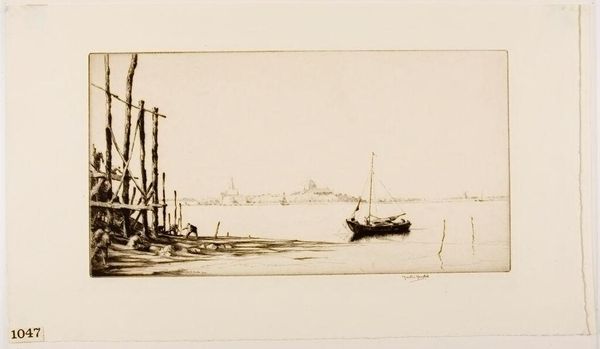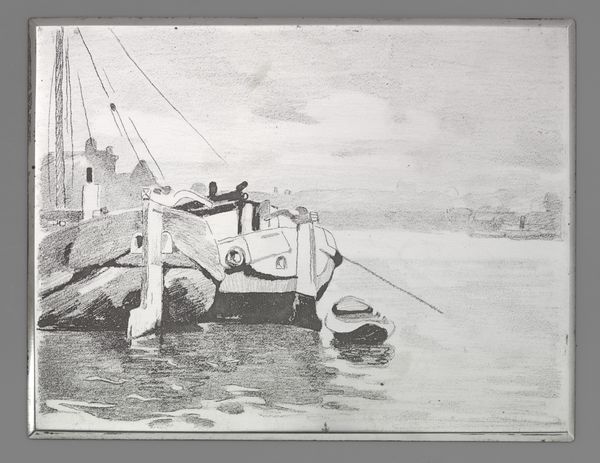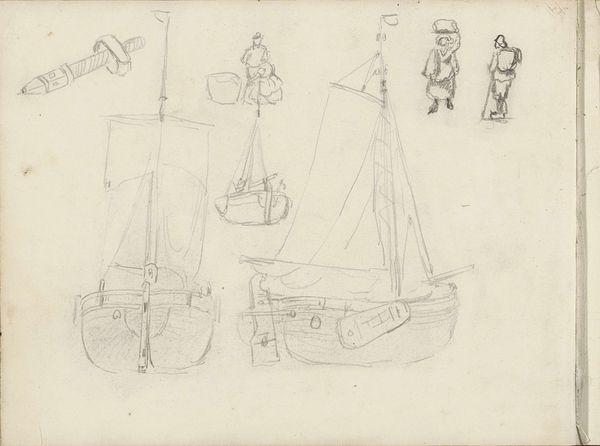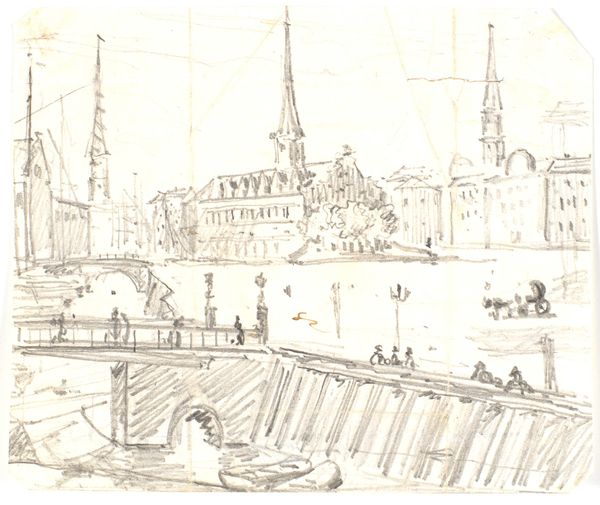
drawing, pencil, graphite
#
drawing
#
sketch
#
pencil
#
graphite
#
cityscape
#
sketching
#
modernism
#
realism
Copyright: Hans Bellmer,Fair Use
Editor: This pencil drawing, "Sketches after Nature" by Hans Bellmer from 1932, has an almost industrial feel. It seems to depict a bustling port scene. What catches your eye when you look at it? Curator: For me, this drawing speaks to the interwar period's fascination with industrial progress intertwined with anxieties about labor. The detailed depiction of the machinery, juxtaposed with the somewhat anonymous figures operating it, brings forth the role of humans within the capitalist structure of the time. Look at how Bellmer focuses more on the imposing architecture and infrastructure than on the workers themselves. What does that suggest to you about his viewpoint, and perhaps, the broader societal attitudes of the era? Editor: It's true, they’re dwarfed by the machinery and the buildings. Were cityscapes a common theme at the time, expressing both excitement and perhaps unease about rapid urbanization? Curator: Absolutely. The rise of industrial centers was dramatically reshaping societies. Artists often used cityscapes as a canvas to explore the social ramifications of this transformation. Bellmer’s rendering lacks romanticism; there's a starkness. His later works went into surrealist eroticism, which is nothing like this sketch. Seeing his dedication to this kind of labor-oriented sketch speaks to the variety of modern artistic viewpoints. Editor: So, this isn't just a portrait of a port, but also a statement about society. That’s incredible to consider. I learned so much. Curator: Precisely! Thinking about the "who," "what," and "why" surrounding a piece helps unpack its true historical significance. Thanks to you for these insights!
Comments
No comments
Be the first to comment and join the conversation on the ultimate creative platform.
